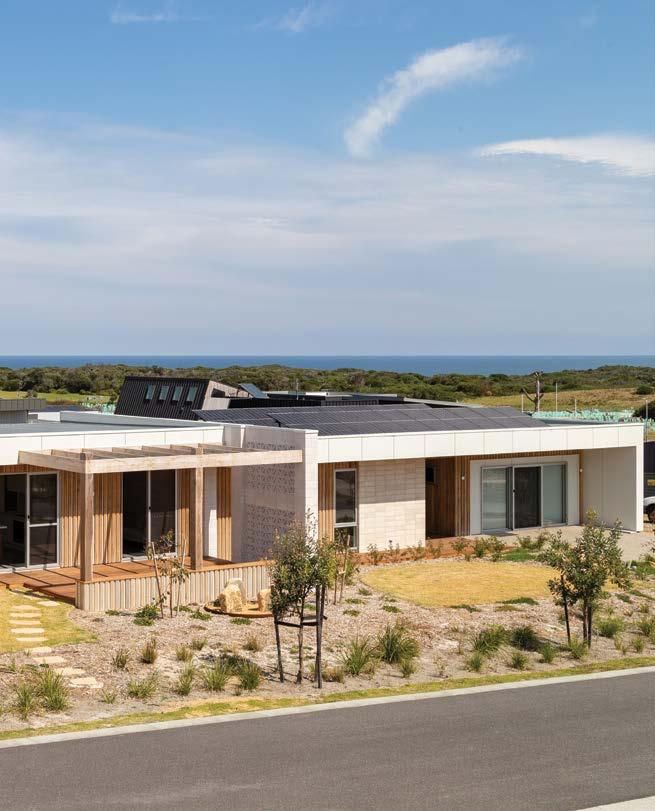
3 minute read
Homeowners Drive Demand for Sustainable Timber Homes
Homeowners Drive Demand for Sustainable Timber Homes
Sustainable and green homes aren’t exactly a new trend. And yet, the demand for sustainable housing solutions continues to grow, with the shift in public perception contributing to the increased acceptance and adoption of ‘green’ building practices.
Sustainable homes aim to reduce the ecological footprint on the environment, not just during the construction but in the embodied energy used in the creation of the building materials themselves, and in the design of a building that reduces greenhouse gas emission for the home’s life span.
Fortunately, one such building material already exists and has the potential to substantially reduce greenhouse gas emissions in the building sector, slash waste, store carbon, insulate the home, and uses relatively less energy in its manufacture.
It’s called timber.
Australian homeowners are calling out for sustainable living as we move towards a net zero future. The Australian construction sector is one of our major polluters and responsible for 492 million tonnes of carbon emissions each year. Thankfully, timber is a carbon positive building material, meaning it stores more carbon than is used in its manufacture. It is the most sustainable building material available and is a truly renewable resource that boasts a lower embodied emissions than other building materials such as concrete, aluminium and steel.
In fact, using one cubic metre of timber in a build results in 0.8 tonnes of C02 being locked away within the building. This is because plantation pine absorbs carbon from our atmosphere and about half of each tree is stored carbon that remains in the timber for the life of a building. Timber has been used for a myriad of applications in building for thousands of years, from decking, framing, cladding… it’s a versatile material. However, with the advances in locally manufactured glue laminated timber (GLT), we are now seeing a trend toward engineered timber use in buildings that require high load applications and often these applications are visually expressed adding to the beauty of the building.
GLT beams are created through the process of layering and gluing laminates together to produce larger and longer length members.
This not only makes GLT beams
Stronger than solid timber, but due to its superior strength to weight ratio means that in most instances GLT is a suitable replacement for steel – assisting in reducing a buildings carbon footprint.
There is some poetry in the fact that GLT is often chosen over steel and concrete for its green credentials but its appearance can add to the biophilia in the built environment – helping individuals feel more connected to nature and the earth that sustainable buildings work to protect.

Timber is the only construction material that leaves no carbon footprint. We specify timber as much as we can in all of our projects Ashley Beaumount











